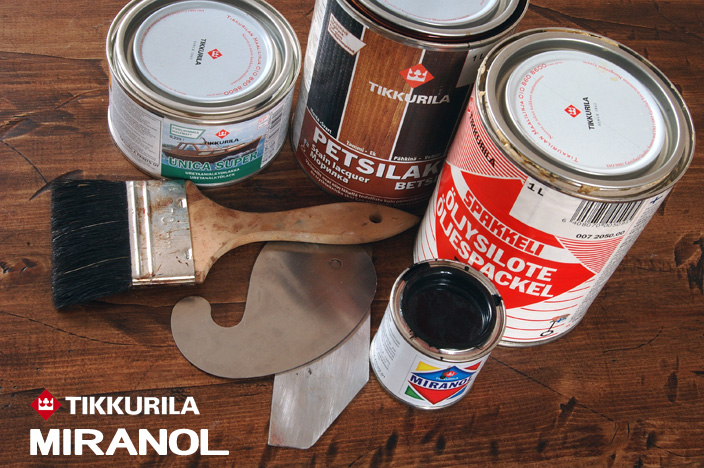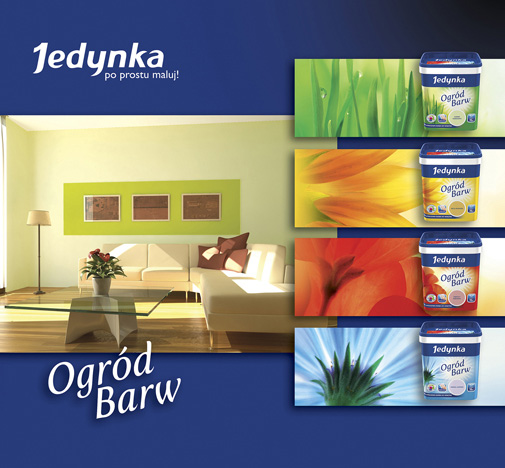
1862
Linseed Oil and Varnish
In 1862, Lieutenant Colonel Anders Lorentz Munsterhjelm, owner of Tikkurila Manor, established a linseed oil press on the banks of the River Keravanjoki in a village near the city of Helsinki. Flax and hemp seeds were used in its production, and linseed oil was itself a finishing material which could be boiled to produce varnish, a binder for paint. In 1867, the oil press began to produce varnish, which was then sold under the brand of Tikkurila.

1920s
Paint and lacquer factory established in Tikkurila
A paint and lacquer factory was set up in Tikkurila in 1919, when the market was dominated by foreign products. With greater relative obscurity, Tikkurila varnish, paints and lacquers were of superior quality but this fact was yet to become well-known among the public. A promotion campaign was therefore initiated to attain closer contact with retailers and professional painters.
The company fared relatively well in the economic depression of the 1920s, thanks to the paint and lacquer factory. The year 1929 saw the beginning of a busy period of new construction at Tikkurila that lasted through the following decade.

1953
First water-borne product launched
Tikkurila introduced its first water-borne product, Joker Interior Paint, in 1953, when the invention of polystyrene-butadiene latex marked the beginning of the triumph of latex products as interior and outdoor paints. Joker has since been well received by customers and still remains a top seller today.

1958
Tikkurila inspires you to colour your life
In 1958, Tikkurila launched its brand new services, including the development of a colouring service entrusted with monitoring and developing colour cards and producing colour schemes. This type of service was a novelty in Finland, perhaps in all of Europe. The colouring of many a Finnish home from the 1950s to the 1970s was the handiwork of artist Yki Nummi, director of the service. The service was also considered socially significant, as the colour schemes for many public buildings, production facility complexes and even entire neighborhoods were determined on the basis of its advice. The service was free of charge and available to everyone.

1967
Demand driven acquisitions and expansion start to take place
The early 1960s saw plant premises renovated and expanded, more modern machinery installed and production rationalized in Tikkurila. However, despite all these measures, production capacity was unable to meet the sharp rise in demand for paint resulted from the suburban construction boom in Finland at that time.
In 1967, the company acquired a production unit in Hanko, which was followed by further acquisitions as well as modernization of production facilities to manufacture paint and other finishing materials that started in the early 1970s.

1970
The first ever personalized tinting system launched
Tikkurila’s Monicolour tinting system launched in 1970 revolutionized both paint-making and distribution to a degree that few could have envisaged at the time. Paints were no longer produced in ready-made colours or tinted at the factory; instead the desired shade could be mixed in shops while the customer waited. There were 360 colours available – it seemed unbelievable.

1972
Family-business-turned state enterprise
Work on plans for a modern production facility to manufacture paints and other finishing materials started in the early 1970s. It was a huge investment and the owner families did not wish to commit themselves. As a result, the family business was taken over by the state-owned Kemira in 1972.
In 1975, the Monicolour plant and central warehouse became a reality: the world’s most advanced automated paint factory that even today retains its standing as a leading-edge facility. The computer-controlled, environmentally friendly production process, which is almost entirely closed and highly efficient in raw material use, was an unheard-of innovation at the time.

1980
Expansion from Eastern Europe to Russia
During the Moscow 1980 Olympics, Tikkurila established a paint factory in St Petersburg under the name of‘Firma Miranol’. The subsequent acquisition of Kraski Teks in 2006 made Tikkurila the leading decorative paint company in Russia. The factory’s state-of-the-art production line of water-borne paints was inaugurated in Obukhovo in 2009.

1982
Expansion from Poland to entire Eastern Europe
Tikkurila has been exporting paints to Poland since 1982, and it entered into a joint venture with its local partners in 1998. In 2001, Tikkurila acquired Jedvnka, a Polish brand of paint, through its Swedish subsidiary Alcro-Beckers to become one of the top three players in Poland’s coatings market. At present, Jedvnka is one of Tikkurila’s largest selling brand of products.

1989
Expansion reaches Baltic regions
Eastern expansion continued when Tikkurila established a joint venture with a chemical company in Estonia (still part of the Soviet Union) in 1989; paint production started in Tallinn (Estonia) in 1992. The following year paint production also started in Riga (Latvia), but later transferred to Tallinn and Vantaa (Finland).

2010
Tikkurila becomes listed
In the spring of 2010, Tikkurila separated itself from Kemira, Finland’s state-run chemical industry group, and was listed on the Helsinki Stock Exchange, earning 80 percent of its revenue from overseas countries to become the best-selling brand of plaint in Finland, Sweden and the Baltic region. Before being listed, the company was renamed Tikkurila Oyj.

2012
150th anniversary
Tikkurila turned 150 years in 2012. The official anniversary day was on 14 August, but the anniversary was celebrated together with various stakeholders throughout the year.
Throughout its over one-and-a-half century’s history, Tikkurila has been focusing on the production of paints for decoration and protection, and has developed from a small linseed press to a leading paint manufacturer in Northern Europe, Russia and Eastern Europe.

